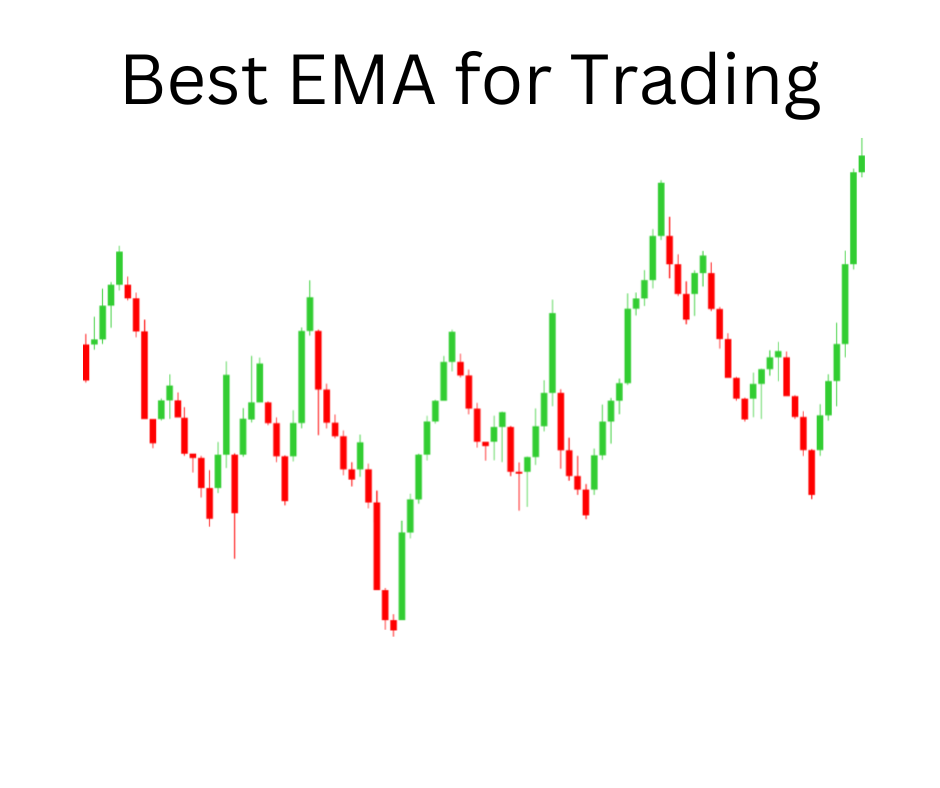As a forex trader, I have found that using Exponential Moving Averages (EMA) can be a powerful tool for identifying trends, entering and exiting trades, and determining support and resistance levels. In this article, I will share my personal experience with the best EMAs for forex trading and how to use them effectively.
Short term EMAs
Short term EMAs are useful for identifying short-term trends and momentum. The 10 EMA and 20 EMA are the most commonly used short term EMAs in forex trading. The 10 EMA is a fast-moving average that reacts quickly to price changes. It is often used to identify short-term trends and potential entry and exit points for trades.

When the price is above the 10 EMA, it is considered bullish; when it is below, it is bearish. The 20 EMA is a slightly slower moving average that is also used to identify short-term trends.
It can be used in combination with the 10 EMA to confirm potential entry and exit points. It is important to note that short-term EMAs can be volatile and prone to false signals. Using them with other indicators and confirming signals with price action is best.
Short-term EMAs can be valuable for identifying short-term trends and momentum in forex trading. They react quickly to price changes, making them useful for identifying potential entry and exit points for trades.
The 10 EMA is a fast-moving average that is commonly used in forex trading. It reacts quickly to price changes and is often used to identify short-term trends. Traders can use the 10 EMA to determine whether the market is in a bullish or bearish trend. When the price is above the 10 EMA, it is considered bullish, and when it is below, it is bearish.
The 20 EMA is a slightly slower moving average that is also commonly used in forex trading. It is useful for identifying short-term trends and can be used in combination with the 10 EMA to confirm potential entry and exit points.
It is important to note that short-term EMAs can be volatile and prone to false signals. Traders should use them in combination with other indicators and confirmed with price action to avoid false signals.
In addition, short-term EMAs should not be used as the sole indicator for a forex trading strategy. Traders should use them in combination with other indicators to confirm signals and analyze price action.
Long term EMAs
Long-term EMAs can be a valuable tool for identifying the overall trend of a currency pair in forex trading.
The 50 EMA is a medium-term moving average that is commonly used in forex trading. It is useful for identifying the direction of the trend and can be used to confirm potential entry and exit points. When the price is above the 50 EMA, it is considered bullish, and when it is below, it is bearish.
The 100 EMA and 200 EMA are longer-term moving averages that are also commonly used in forex trading. They are useful for identifying major trends in the market and can be used to determine support and resistance levels.
When the price is above the 100 EMA or 200 EMA, it is considered to be in a long-term uptrend; when it is below, it is considered to be in a long-term downtrend.
Long-term EMAs can also be used to determine fair market value for a currency pair. When price deviates too far from long-term EMAs, it tends to return to them to reach equilibrium before continuing up or down.
EMAs for entering trades
EMAs can be used to identify potential entry points for trades. When the price crosses above a moving average, it is a bullish signal, and when it crosses below, it is bearish.
Short-term EMAs, such as the 10 EMA and 20 EMA, are useful for identifying short-term trends and potential entry points. When the price is above the short-term EMAs, it is considered bullish, and when it is below, it is bearish.
Long-term EMAs, such as the 50 EMA, 100 EMA, and 200 EMA, are useful for identifying major trends in the market and can be used to confirm potential entry points.
It is important to note that EMAs should be used in combination with other indicators and confirmed with price action.
EMAs for exiting trades
EMAs can also be used to identify potential exit points for trades. When the price crosses below a moving average, it is a bearish signal, and when it crosses above, it is bullish.
Short-term EMAs, such as the 10 EMA and 20 EMA, can be useful for identifying short-term trends and potential exit points. When the price crosses below the short-term EMAs, it is considered bearish, and when it crosses above, it is bullish.
Long-term EMAs, such as the 50 EMA, 100 EMA, and 200 EMA, are useful for identifying major trends in the market and can be used to confirm potential exit points.
It is important to note that EMAs should not be used as the sole indicator for exiting trades. It is best to use them in combination with other indicators and to confirm signals with price action.
Moving Averages for Trend direction
Moving averages are useful for identifying the direction of the trend. When the price is above a moving average, it is considered bullish, and when it is below, it is bearish.
EMAs, specifically the 50 EMA, 100 EMA, and 200 EMA, are commonly used to identify the overall trend of a currency pair. Traders can use these moving averages to determine whether the market is in an uptrend, downtrend, or sideways trend.
It is important to note that moving averages should not be used as the sole indicator for identifying trend direction. It is best to take moving average indicators and use them in combination with other indicators and to confirm signals with price action.
Moving Averages for support and resistance levels
Moving averages can also be used to determine support and resistance levels. When the price approaches a moving average, it is likely to either bounce off or break through the moving average.
Short-term EMAs, such as the 10 EMA and 20 EMA, can be useful for identifying short-term support and resistance levels. When the price approaches a short-term EMA, it is likely to either bounce off or break through the EMA.
Long-term EMAs, such as the 50 EMA, 100 EMA, and 200 EMA, can be useful for identifying major support and resistance levels. When the price approaches a long-term EMA, it is likely to either bounce off or break through the EMA.
It is important to note that moving averages should not be used as the sole indicator for identifying support and resistance levels. It is best to use them in combination with other indicators and to confirm signals with price action.
How are Moving Averages Calculated?
Moving averages are calculated by taking the average of a currency pair’s closing prices over a specified period. The period can be as short as a few minutes or as long as several years.
EMA is a type of moving average that places more weight on recent prices than on older prices. This makes EMA more responsive to price changes than Simple Moving Averages (SMA).
SMA is a type of moving average that gives equal weight to all prices over a specified period. This makes SMA less responsive to price changes than EMA.
Exponential moving average vs Simple moving average
EMA and SMA are both types of moving averages, but they differ in how they are calculated and how they respond to price changes.
EMA places more weight on recent prices than on older prices, which makes it more responsive to price changes than SMA. EMA is better suited for identifying short-term trends and momentum.
SMA gives equal weight to all prices over a specified period, which makes it less responsive to price changes than EMA. SMA is better suited for identifying long-term trends and support and resistance levels.
It is important to note that both EMA and SMA can be useful in forex trading and should be used in combination with other indicators.
More: How to use moving averages in your trading
Conclusion
Exponential Moving Averages (EMA) can be a powerful tool for forex traders when used effectively. Short-term EMAs, such as the 10 EMA and 20 EMA, are useful for identifying short-term trends and momentum. Long-term EMAs, such as the 50 EMA, 100 EMA, and 200 EMA, are useful for identifying the overall trend of a currency pair.
EMAs can identify potential entry and exit points for trades and determine support and resistance levels. Moving averages should not be used as the sole indicator for forex trading and should be used in combination with other indicators and confirmed with price action.
When using EMAs, it is important to be aware of their limitations. Short-term EMAs can be volatile and prone to false signals, while long-term EMAs are slower moving and less volatile. Traders should use EMAs in combination with other indicators to confirm signals and to analyze price action.
In addition to EMAs, moving averages can also be useful for identifying the direction of the trend and determining support and resistance levels. Traders should be familiar with technical analysis and the differences between EMA and SMA and choose the moving average that is best suited for their trading strategy.
Overall, EMAs and moving averages are valuable tools for forex traders when used effectively. They can help traders identify trends, enter and exit trades, and determine support and resistance levels. However, they should be used in combination with other indicators and confirmed with price action to avoid false signals.
FAQs
What is an Exponential Moving Average (EMA)?
An Exponential Moving Average (EMA) is a type of moving average that places more weight on recent prices than on older prices. This makes EMA more responsive to price changes than Simple Moving Averages (SMA).
What is the difference between EMA and SMA?
EMA places more weight on recent prices than on older prices, which makes it more responsive to price changes than SMA. EMA is better suited for identifying short-term trends and momentum.
SMA gives equal weight to all prices over a specified period, which makes it less responsive to price changes than EMA. SMA is better suited for identifying long-term trends and support and resistance levels.
How are moving averages calculated?
Moving averages are calculated by taking the average of a currency pair’s closing prices over a specified period.
How can EMAs be used in forex trading?
EMAs can be used to identify potential entry and exit points for trades, determine support and resistance levels, and confirm signals from other indicators.
What are some limitations of EMAs?
Short-term EMAs can be volatile and prone to false signals, while long-term EMAs are slower moving and less volatile. Traders should use EMAs in combination with other indicators to confirm signals and to analyze price action.
